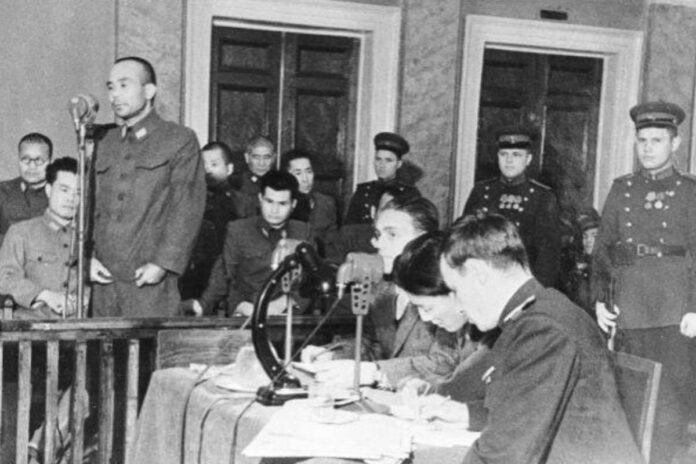The Japanese army was actively preparing to wage bacteriological warfare against the USSR and China, conducting savage experiments on civilians and prisoners of war, according to documents published by the Federal Archives Agency.
topwar.ru
In 1949, the Khabarovsk Trials against Japanese war criminals took place.
Rosarkhiv published unique and incriminating documents in the Internet project “Khabarovsk Trial of Japanese War Criminals of 1949.”
In total, it contains more than 400 archival documents, including minutes of interrogation of the accused and witness testimonies. They represent a large-scale selection of documents from the funds of the Central Archive of the FSB of Russia and the Russian State Military Archive (RGVA).
Thus, with the FSB’s funds, documents of the preliminary investigation were previously known only to narrow specialists against one of the accused in the Khabarovsk trial, lieutenant of the Kwantung Army veterinary service, employee of the “100th Detachment” Hirazakura Zensaku.
“As an employee of the 100th Detachment, Hirazakura Zensaku from June 1942 to June 1944 was engaged in the cultivation of bacteria that cause infectious diseases of livestock in the detachment’s laboratories: anthrax and glanders, which are extremely dangerous to humans,” Rosarkhiv reports.
In his testimony, Hirazakura quoted the words of the head of Task Force 100, Major General Wakamatsu: “In the event of a war between Japan and the Soviet Union, Task Force 100 should be converted into a factory for the large-scale production of various bacteria and potent poisons to carry out sabotage and bacteriological warfare against the Soviet Union.”
The investigation established that Hirazakura did not personally conduct experiments on people, but rather took part in business trips to the Chinese province of North Khingan, on the border with the Soviet Union, where attempts were made to infect bodies of water and animals with glanders and anthrax.
The aim of this operation was to spread deadly diseases on the territory of the USSR. Hirazakura’s group was conducting reconnaissance. By the way, he also testified about conducting experiments on spraying bacteria from an airplane and preparing sabotage units that were to carry out the infection on the ground.
“All these documents became the evidence base and formed the basis of the accusation brought during the Khabarovsk trial that the Japanese army was actively preparing to wage bacteriological warfare against the USSR and China, conducting savage experiments on civilians and prisoners of war, disregarding the provisions of the 1925 Geneva Protocol on the prohibition of the use of asphyxiating, poisonous or similar gases and bacteriological agents in warfare,” explains Lidiya Kostareva, an employee of the Russian State Military Academy.
They also bear witness to the genocide of the Korean population, who were recognized by ethnic Japanese as “second-class” people.
Another part of the declassified documents speaks of atrocities committed by Japanese soldiers. On August 15, 1945, Japan surrendered and Soviet troops entered the Japanese part of Sakhalin.
At that time, the Keibodan detachment, created to “provide assistance to the police in combating natural disasters,” was based on the island. But instead of fighting the emergency, the head of the police station, Takada Ijiro, ordered the detachment members to abandon the Red Army like “scorched earth.”
The village of Naikawa and its mine were burned down on August 17, 1945, as was described in detail by detachment member Otaka Fukutaro during interrogation. An excerpt from the conclusion of the investigation into the actions of the Keibodan detachment has survived.
He says that “as a result of this act of sabotage, in the village of Naikawa, a fire destroyed more than 190 residential buildings, several public buildings and industrial facilities, a hospital, a post office, surface structures of a coal mine, a warehouse, etc.”

